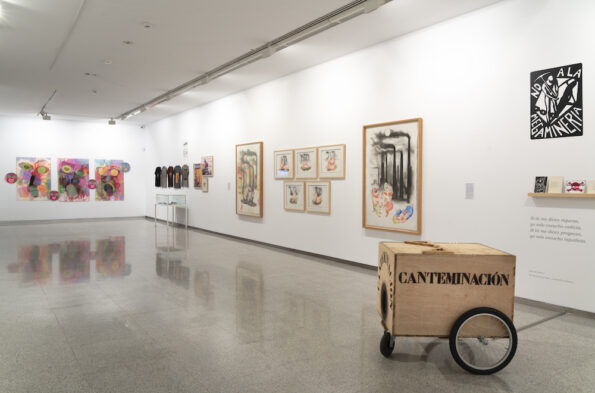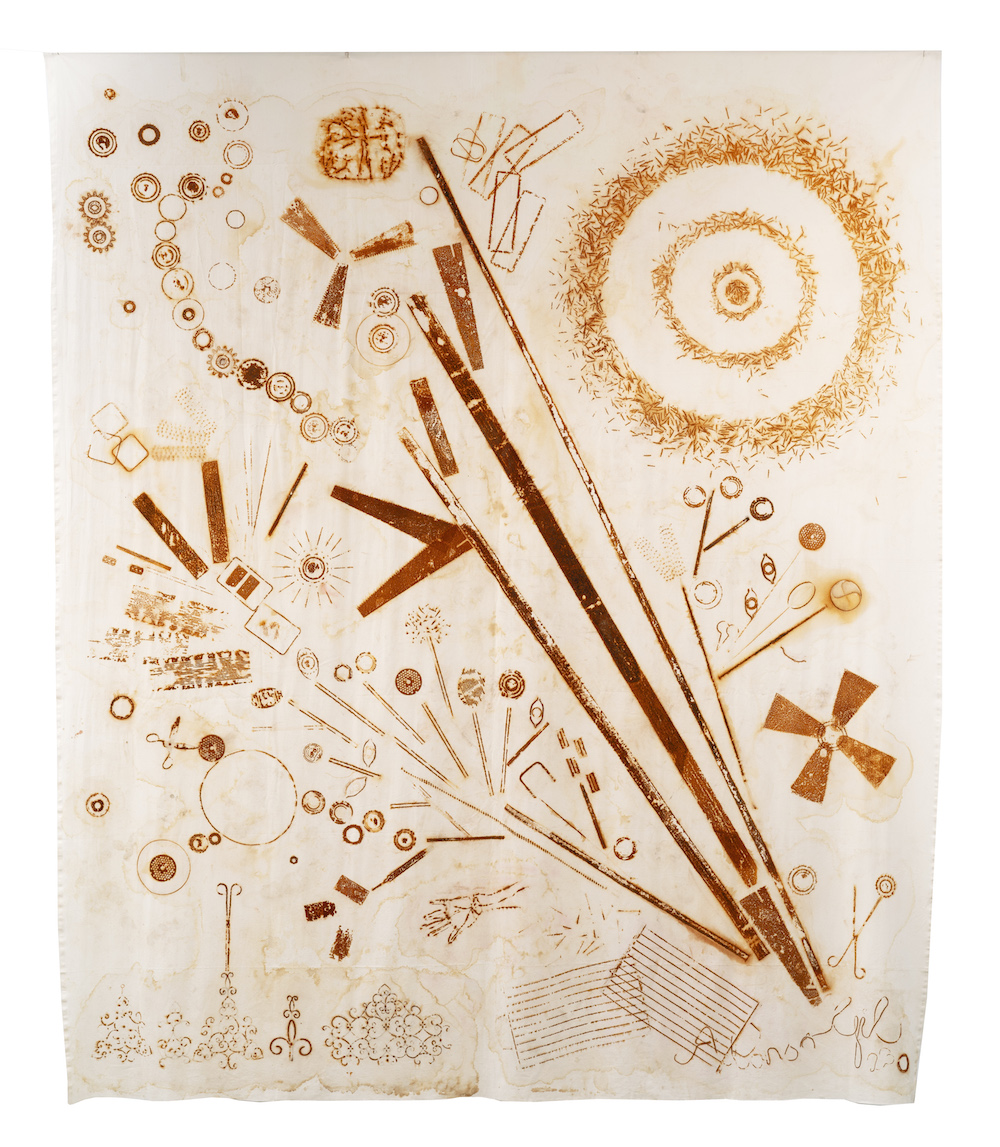Search
To search for an exact match, type the word or phrase you want in quotation marks.
A*DESK has been offering since 2002 contents about criticism and contemporary art. A*DESK has become consolidated thanks to all those who have believed in the project, all those who have followed us, debating, participating and collaborating. Many people have collaborated with A*DESK, and continue to do so. Their efforts, knowledge and belief in the project are what make it grow internationally. At A*DESK we have also generated work for over one hundred professionals in culture, from small collaborations with reviews and classes, to more prolonged and intense collaborations.
At A*DESK we believe in the need for free and universal access to culture and knowledge. We want to carry on being independent, remaining open to more ideas and opinions. If you believe in A*DESK, we need your backing to be able to continue. You can now participate in the project by supporting it. You can choose how much you want to contribute to the project.
You can decide how much you want to bring to the project.

On September 28th, the Sala Atín Aya opened the exhibition Alonso Gil.247, which can be visited until December 10th. This exhibition, although it is not intended as a retrospective as such, encompasses more than twenty years of Alonso Gil’s (Badajoz, 1966) career. A compilation of works where the transversality of the artist’s work is made visible, not only at a disciplinary level (painting, photography, drawing, installation, urban intervention, video, etc.) but also at a discursive level: art as a consequence of the artist’s creation as a cognitive subject.
The idea of the artist as a bohemian person whose concerns differ from those of the rest of mortals is still quite popular: the artist who gives his life to art in an almost mystical act, consecrating themselves as a transcendental being. And this narrative may even have influenced some artists. Without entering moral judgments, this is not the case of Alonso Gil, who rather than giving his life to art, has given his art to life. A dedication that, although it indeed implies a commitment, is not framed in a mystical halo, but rather in a materialistic one. Life is understood from the human point, from the earthly; life is seen with closeness.
Flores del desierto (2023) is a large canvas on which Alonso Gil strategically placed different metal waste (saws, cans, tools, components of anti-personnel mines) so that after the process of oxidation, a sort of bouquet was formed on the canvas.

If I may be allowed the license, in Velázquez terms, Alonso Gil’s work for me looks more like Vieja friendo huevos (which Velázquez paints in Seville around 1618, before his 20th birthday, just after he was admitted in the painters’ guild, and in which he portrays a tangible reality for the majority of the people in his time, both sensorially and emotionally), than Las Meninas (or La familia de Felipe IV, dated 1656 and painted four years before his death, when he had been a court painter for more than 30 years, having won several different awards of various kinds and portraying a reality that was beyond most people of his time). This does not mean that I think one work is better or more interesting than the other, I am simply reflecting, not on the technique, the mastery, or the resources employed in every work, but about the context from which they emerge.

Gritos (2023) is an audiovisual piece in which Gil compiles a series of stories, a kind of monologue of people who work in the area around his studio (in the Seville neighborhood of Puerta de la Carne). In these stories, a hairdresser, a recently retired gas bottle delivery man, a street musician, a flower seller, or a waitress (among so many others) talk about their work, their dreams, or their frustrations.
The very title of the exhibition 247 alludes to how the artist perceives and understands himself as an artist in a continuous way, 24 (hours a day) 7 (days a week). The transversality of art in the artist’s life. In other words, the artist’s gaze, concerns, interests, or thoughts are not intermittent, they do not vary according to whether the artist is in or out of the studio. Whether he is at the hairdresser’s, buying cigarettes, having a drink with friends, at the opening of an exhibition, reading a book, attending a demonstration, at the market, or in the studio, Alonso Gil is always in that gear where life is seen from the art and art is committed at the same time to that perceived reality. In the studio or outside of it, Alonso Gil is always in the mud of art, in the mud of life.

This self-perception of the artist as a subject exposed to tangible contexts such as the political, social, relational, or affective establishes in Alonso’s work a relationship between his own artistic language and the reality he’s trying to translate. That relationship is reflected not only in the narrative inscribed in his works but also in the respective processes of creation and production. Works such as the aforementioned Gritos or Sáhara Libre Wear or Canteminación (among others) have been produced collectively, involving agents or subjects belonging to the concrete context Alonso is dealing with in his works. In this regard, I think it is particularly interesting to mention the publication Textos sobre el trabajo, a list of different texts about work, produced in collaboration with the bookshop Bakakai in Granada.
Furthermore, in some works it is clear that politics are present in Alonso Gil’s work, dealing with concrete problems such as the one concerning the Sáhara or the problems with the refining and mining in Extremadura (as in Mi nombre es mío, One Dollar Bill, A Pintaropa, Los Abandonados, Mi casa es tu casa, Canteminación o Guarrerías). However, politics are present in his work as a transversal element in the lives of individuals and societies.

In short, Alonso Gil. 247 is constituted through a journey that covers more than 20 years of the artist’s work through a series of works that reflect the pillars on which he has been laying the foundations of a very particular language, process, and narrative. An exhibition in which it is clear that Alonso Gil, apart from being an artist, is also an artist as a political, social, and affective cognizant subject, and he’s committed to his time and their conflicts, without neglecting the poetics and even the irony that these require.

Exhibition Alonso Gil. 247, curated by Esther Regueira
Until 10 December at Sala Atín Aya, ICAS (Instituto de la Cultura y las Artes de Sevilla)
Arguijo str. 4, 41003 Sevilla

Guillermo Amaya Brenes, although born in Cadiz (Conil, 1993), has been living and working in Seville since 2015. Even though he doesn’t like either term too much, he is a critic and curator of contemporary art. He has worked in galleries such as Di Gallery or Espacio Olvera, has written a multitude of curatorial texts for galleries such as Rafael Ortiz or Yusto Giner and has worked and continues to work closely with artists such as Mariajosé Gallardo or Ana Barriga. In the 2022-2023 season he directed the DOMO gallery.
"A desk is a dangerous place from which to watch the world" (John Le Carré)